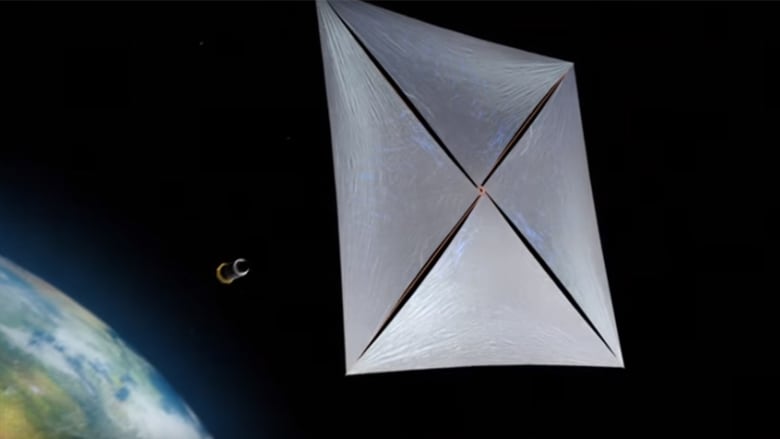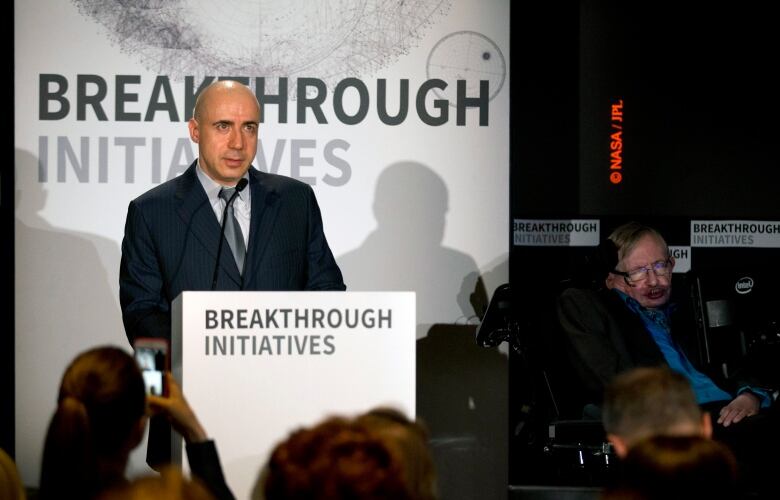Yuri Milner, Stephen Hawking's Breakthrough Starshot targets Alpha Centauri
$128M initiative will seek Earth-like planet 40 trillion kilometres away

Billionaire internetinvestor Yuri Milner announced another $128 million ($100 million US)initiativeon Tuesday to better understand the cosmos, this time bydeploying thousands of tiny spacecraft to travel to our nearestneighboring star system and send back pictures.
If successful, scientists could determine if Alpha Centauri,a star system about 40 trillion kilometres (25 trillion miles) away, contains anEarth-like planet capable of sustaining life.
The catch: It could take years to develop the project,dubbed Breakthrough Starshot, and there is no guarantee it will
work.
Tuesday's announcement, made with cosmologist StephenHawking, comes less than a year after the announcement ofBreakthrough Listen. That decade-long, $128 million ($100 million US) project,also backed by Milner, monitors radio signals for signs ofintelligent life across the universe.
Breakthrough Starshot involves deploying smalllight-propelled vehicles to carry equipment like cameras and
communication equipment. Scientists hope the vehicles, known asnanocraft, will eventually fly at 20 per cent of the speed oflight, more than a thousand times faster than today'sspacecraft.
"The thing would look like the chip from your cell phonewith this very thin gauzy light sail," said Pete Worden, the
former director of NASA's Ames Research Center, who is leadingthe project. "It would be something like 10, 12 feet across."
He envisions sending a larger conventional spacecraftcontaining thousands of nanocraft into orbit, and then launching
the nanocraft one by one, he said in an interview.
The idea has precedents with mixed results.
Two years ago, Cornell University's KickSat fizzled afterthe craft carrrying 104 micro-satellites into space failed to
release them. The plan was to let the tiny satellites orbit andcollect data for a few weeks.
20 year journey
Worden acknowledges challenges, including the nanocraftsurviving impact on launch. They would then endure 20 years oftravel through the punishing environment of interstellar space,with obstacles such as dust collisions.
"The problems remaining to be solved - any one of them areshowstoppers," Worden said.
Governments likely would not take on the research due to itsspeculative nature, he said, yet the technology is promisingenough to merit pursuing.

If the nanocraft reach the star system and succeed in takingphotographs, it would take about another four years to transmitthem back to Earth.
A onetime physics PhD student in Moscow who dropped out tomove to the United States in 1990, Milner is one of a handful oftechnology tycoons devoting time and money to space exploration.He is known for savvy investments, including in social networkFacebook Inc and Chinese smartphone company Xiaomi.












_(720p).jpg)


 OFFICIAL HD MUSIC VIDEO.jpg)
.jpg)



























































































